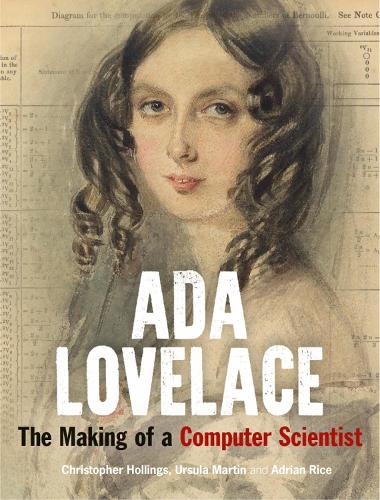
Ada Lovelace: The Making of a Computer Scientist
(Hardback)
Publishing Details
Ada Lovelace: The Making of a Computer Scientist
By (Author) Christopher Hollings
By (author) Ursula Martin
By (author) Adrian Rice
Bodleian Library
Bodleian Library
27th April 2018
United Kingdom
Classifications
General
510.92
Physical Properties
Hardback
128
Width 161mm, Height 210mm
Description
Featuring images of the 'first programme' and Lovelace's correspondence, alongside mathematical models, and contemporary illustrations, this book shows how Ada Lovelace, with astonishing prescience, explored key mathematical questions to understand the principles behind modern computing.
Ada, Countess of Lovelace (1815-1852), daughter of romantic poet Lord Byron and his highly educated wife, Anne Isabella, is sometimes called the world's first computer programmer and has become an icon for women in technology. But how did a young woman in the nineteenth century, without access to formal school or university education, acquire the knowledge and expertise to become a pioneer of computer science Although an unusual pursuit for women at the time, Ada Lovelace studied science and mathematics from a young age. This book uses previously unpublished archival material to explore her precocious childhood, from her ideas for a steam-powered flying horse to penetrating questions about the science of rainbows. A remarkable correspondence course with the eminent mathematician Augustus De Morgan shows her developing into a gifted, perceptive and knowledgeable mathematician. Active in Victorian London's social and scientific elite alongside Mary Somerville, Michael Faraday and Charles Dickens, Ada Lovelace became fascinated by the computing machines devised by Charles Babbage. The table of mathematical formulae sometimes called the 'first programme' occurs in her paper about his most ambitious invention, his unbuilt 'Analytical Engine'. Ada Lovelace died at just thirty-six, but her paper still strikes a chord to this day, with clear explanations of the principles of computing, and broader ideas on computer music and artificial intelligence now realised in modern digital computers. Featuring images of the 'first programme' and Lovelace's correspondence, alongside mathematical models, and contemporary illustrations, this book shows how Ada Lovelace, with astonishing prescience, explored key mathematical questions to understand the principles behind modern computing.
Reviews
'Particularly fascinating is her correspondence with De Morgan, in which strings of numbers, signs and equilateral triangles dance excitedly across the page.' -- Kathryn Hughes * The Guardian *
'This lavishly illustrated short biography draws on much unpublished material such as her correspondence with the leading mathematician Augustus De Morgan.' -- Matthew Reisz * THES *
'This historical book will hopefully soon be in all schools and libraries for study and inspiration.' * Armadillo Magazine *
'A beautiful and very readable account of a pioneering woman who made a notable contribution to science - hightly recommended!' * Kaggsy's Bookish Ramblings *
'Brief, well-illustrated and lucid account of her career.' * LRB *
'In "Ada Lovelace: The Making of a Computer Scientist", the authors give a splendidly crisp, clear description of her education, explaining the vogue for mathematics against the background of nineteenth-century concerns with industry, steam, navigation, and statistics. This short book is also enlivened by superb illustrations. To see Adas careful penmanship as she asks increasingly difficult questions somehow makes abstract calculations human and equations suddenly exciting. That intimate enjoyment is clearer still from the scrap of paper that records her and the mathematician Charles Babbage playing with mathematical puzzles: he draws diagrams in a scratchy pen, while she leans over and adds to them in pencil. Dusty archives dance into life.' -- Jenny Uglow * The New York Review of Books *
'Airs some fascinating material from the library's deepest archives clearly intended as an inspiration to girls to pursue their scientific interests.' * TLS *
'This fascinating biography traces the extraordinary rise of Ada Lovelace as a mathematician and, potentially, one of the first computer scientists.' * Significance Magazine (Royal Statistical Society) *
'This richly illustrated biography introduces Ada Lovelace to a general readership [and] presents substantial evidence that indeed the work as a whole was fully within her capability.' * Mathematical Reviews *
'Computer science sorely needs some female icons, but it is unhelpful to construct romanticised semi-goddesses. By reproducing so many of her own letters and diagrams, these three mathematical authors have presented a more honest portrayal of Ada Lovelace.' * Women's History Review *
Author Bio
Christopher Hollings is a Departmental Lecturer in the Oxford Mathematical Institute, and a Senior Research Fellow of The Queens College, Oxford. Ursula Martin is a Professor at the University of Oxford whose research interests span mathematics, computer science and the humanities. Adrian Rice is Professor of Mathematics at Randolph-Macon College in Virginia, USA.
